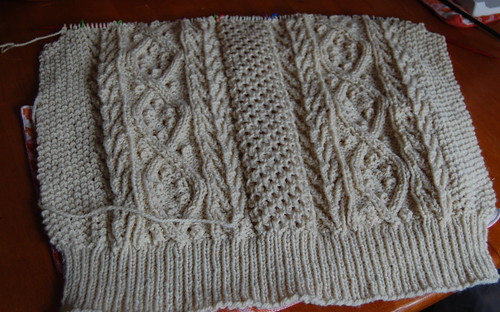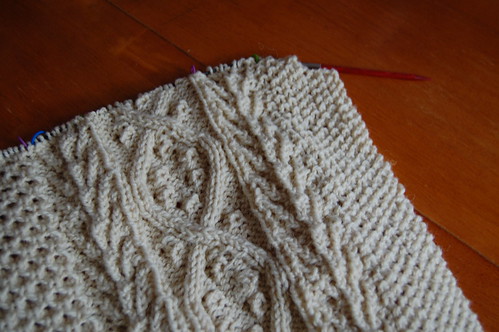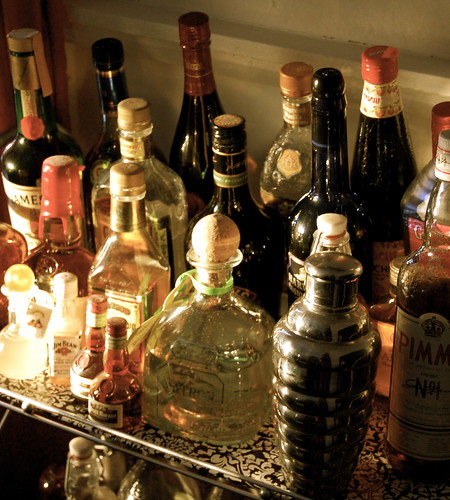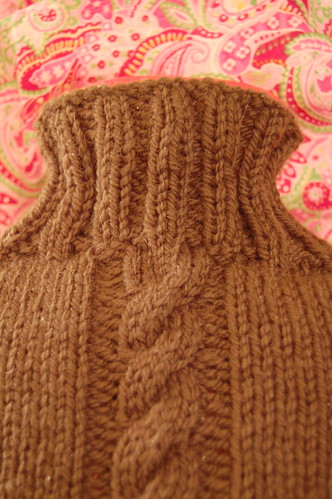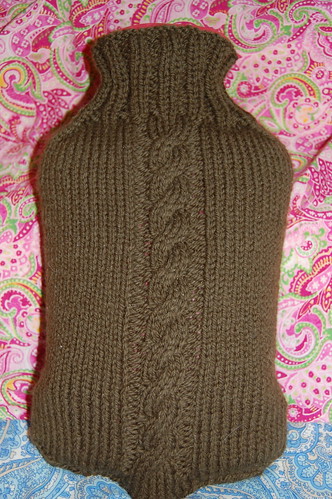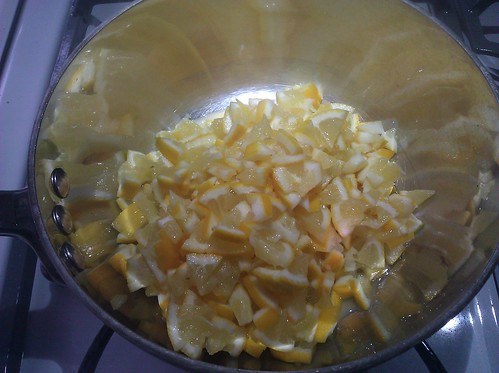Before O was born I got sucked into researching my family, thanks to my mother, who used to spend her weekends researching our Norwegian ancestors at the LDS library near her home in Connecticut. Since my mother's side of the family was covered, I thought it would be interesting to find out more about my father's family. When I was in my early teens, my paternal grandmother shared many stories about her childhood, replete with servants and one nanny whom she adored. She had some framed photographs of my great-grandmother, a beautiful blonde-haired society girl named Lulu. One of the photos was of Lulu's enormous wedding party, dressed in their Edwardian finery. It was definitely not a budget affair.
While certainly not poor when I knew her, my grandmother wasn't living with servants like she did as a child, so once I asked what happened to all the money. The distant look in her face faded away and she said, "My father lost it all." She seemed annoyed by my question, so I dropped it. Knowing that my grandmother was born in 1918, I assumed the family fortune disappeared in the Market Crash of 1929. Further questioning on my part was fruitless. No one in the family wanted to talk about my grandmother's father; my own father knew very little and, in fact, had never met him. All he could offer was that his grandfather had died "downstate." My father is a Vermonter, so anything south of him is "downstate," including Brattleboro, the Everglades, and South America.
I got a few more clues from my great aunt and great uncle in the late 1990s. My great-grandfather's name was John "Jack" Forrest and he'd worked as an executive for Remington Typewriter. That was enough to get me started. I eventually found out his full name was John Prescott Forrest, and he was the youngest child of a prominent Canadian minister and scholar, the
Reverend John Forrest. Rev. Forrest was president of
Dalhousie University in Halifax, Nova Scotia, where he served until shortly before his death in 1920. His wife,
Annie Prescott Duff, had come from an equally prominent Canadian family; her father, William Duff, was a Scottish-born Presbyterian minister like her husband.
The only thing I knew about Reverend Forrest's parentage was that his father, Alexander Forrest, was an M.D./surgeon and Scottish immigrant. Back in the late 1990s and early 00s, I spent hours scouring microfiche and computer screens at the New England Historic Genealogical Society searching for info on Dr. Forrest, but to no avail. The older members of my family were interested in my research and gave me as many clues as they could, but eventually I had to put the research aside and focus on other projects -- one being the birth of my son in 2001. Since then, my great aunt and great uncle passed away, taking with them any last clues. Or so I thought ...
Fast forward to last week. Every now and then I type my gr-gr-grandfather's name into Google to see what pops up. I was surprised when one of the top hits was a blog that had mentioned his name. My mouth just about dropped open when I started reading the blog and figured out that one of my cousins, C--, had gotten into genealogy and done an enormous amount of research on the family. I quickly added a comment to one of the blog posts and within minutes he e-mailed me.
If you're at all interested in the Forrest family of Halifax, Nova Scotia, I urge you to check out
C--'s well-researched blog -- I don't want to repeat what he's written there. Today I just want to talk about my gr-gr-gr-grandfather Alexander Forrest, the Scottish surgeon.
[caption id="attachment_2191" align="alignleft" width="191"]

Dr. Alexander Forrest, 1870, courtesy of CThomas[/caption]
Some months ago
I blogged about a movie called
Burke and Hare starring Simon Pegg, a film based on the true story of two Irish graverobbers who murdered and sold their victims' bodies to the medical school at the University of Edinburgh. (Cadavers were hard for doctors to obtain, so they often relied on unscrupulous sorts to get them the bodies they needed for dissection and study.) I speculated that Dr. Forrest was probably studying medicine in Scotland about the time of the
West Port murders, although I suspected he studied in Glasgow.
C's research confirmed that Dr. Forrest studied medicine at the University of Glasgow from 1823 to 1825. However, he then went on to study at the University of Edinburgh in 1826, and obtained his medical license from the Royal College of Surgeons in Edinburgh in December of 1827, the same year Burke and Hare started selling bodies to the University. Yikes, I was closer than I thought!
Dr. Forrest opened a private practice soon after graduation, and also served in the Royal Navy, before marrying my gr-gr-gr-grandmother Barbara Ross McKenzie (a Highlander!) and leaving Scotland for Nova Scotia around 1832.
It's fascinating to learn that my ancestors played parts in history. Now I have a (tenuous!) family connection to an unsavory crime that led to the 1832 Anatomy Act in Britain, which provided legal access to human cadavers for medical study. I have family who fought in the Revolutionary War, others who were chased out of Boston for being British sympathizers, a gr-gr-grandfather shot and killed by Irish nationalists, a cousin who was the American ambassador to Germany shortly before Hitler grabbed power (letters reveal he was not impressed with Adolf), and a gr-grandfather who was friends with Norwegian explorer Roald Amundsen.
The stuff you find out just by digging around! I'm so happy to learn more about my Scottish ancestry, since I already know quite a bit about my British, Irish, and Scandinavian family. How about your family? Any historic connections or wild factoids?



